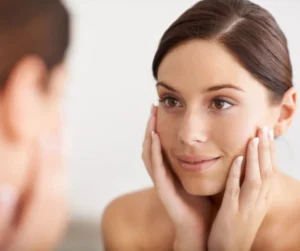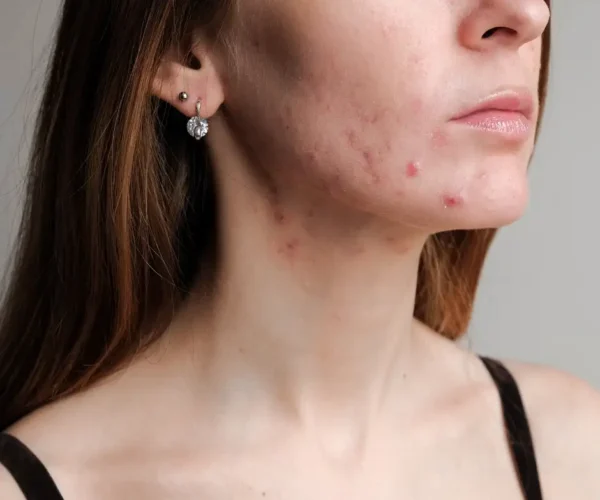Acne scars can be one of the most stubborn skin concerns to treat. While there are many skincare products and cosmetic treatments available, one innovative approach that’s gaining popularity for its natural healing properties is PRP (Platelet-Rich Plasma) therapy for acne scar treatment. This non-surgical procedure uses your body’s own plasma to rejuvenate and repair damaged skin, reducing scars and promoting a smoother, more even complexion.
In this blog, we’ll explore in detail what PRP therapy for acne scars is, how PRP helps in acne scar treatment, and why it’s becoming a preferred choice for many patients seeking acne scar rejuvenation PRP sessions. We’ll also discuss how many PRP sessions are needed for best results and what you can expect from this advanced treatment.
If you’re considering PRP or other professional acne scar treatments, visit Parpar’s Acne Scar Treatment service in Airmont, NY to learn more about personalized care options.
What Is PRP Therapy for Acne Scars?
PRP therapy for acne scars, also known as platelet-rich plasma therapy, is a cosmetic procedure that uses a concentration of a patient’s own platelets to accelerate the healing process and stimulate collagen production. Platelets are components of your blood that contain growth factors and proteins essential for cell regeneration and tissue repair.
The process begins with drawing a small sample of your blood, which is then spun in a centrifuge to separate the plasma from other blood components. The resulting platelet-rich plasma is injected or microneedled into the areas affected by acne scars. The growth factors in PRP help to trigger your skin’s natural healing mechanisms, resulting in smoother, firmer, and more rejuvenated skin over time.
According to the National Center for Biotechnology Information (NCBI), PRP therapy has been found to significantly improve acne scar texture and pigmentation by promoting collagen synthesis and tissue remodeling.
How Does PRP Help in Acne Scar Treatment?
One of the most common questions is: how does PRP help in acne scar treatment? The answer lies in your body’s own ability to heal and regenerate. PRP acts as a natural bio-stimulator, encouraging the skin to rebuild itself from within. The growth factors released from platelets trigger a cascade of healing responses that improve skin tone, texture, and elasticity.
1. Collagen Stimulation
PRP stimulates the production of collagen — a protein responsible for maintaining skin’s firmness and structure. As collagen rebuilds, depressed acne scars begin to rise and blend with the surrounding skin, creating a smoother surface. This is especially beneficial for rolling and boxcar-type scars.
2. Enhanced Skin Regeneration
By delivering concentrated growth factors directly into the skin, PRP accelerates cell renewal. This means faster recovery, healthier skin tissue, and visible reduction in scar depth and discoloration. The micro-healing process replaces damaged cells with new, healthy ones, improving overall skin texture.
3. Natural Healing With Minimal Risk
Since platelet-rich plasma therapy uses your own blood, it minimizes the risk of allergic reactions or side effects. This makes PRP for acne scars a safe and natural alternative for people who prefer less invasive treatments compared to chemical peels or laser procedures.
Is PRP Effective for Acne Scar Removal?
Many patients wonder: is PRP effective for acne scar removal? Research and clinical results say yes — PRP therapy is highly effective for improving the appearance of acne scars, especially when combined with other treatments such as microneedling or fractional lasers.
The effectiveness of PRP acne scar treatment comes from its dual ability to rejuvenate skin at the cellular level and boost natural healing. Patients often notice improved skin tone, texture, and reduced scar visibility after just a few sessions.
Several studies published in the Journal of Cutaneous and Aesthetic Surgery found that PRP enhanced skin texture and decreased scar severity in patients with atrophic acne scars, making it one of the most promising regenerative therapies for scar reduction.
Visible Improvements You Can Expect
- Smoother skin surface and reduced scar depth
- Even skin tone and minimized hyperpigmentation
- Improved skin elasticity and firmness
- Reduction in overall redness and inflammation
Although PRP may not completely erase deep scars, consistent treatments can significantly improve their appearance and help restore your confidence.
How Many PRP Sessions Are Needed for Acne Scars?
The number of sessions required varies depending on your skin condition and goals. Generally, most patients need 3 to 6 sessions of PRP for acne scars spaced about 4 to 6 weeks apart for optimal results. Each session gradually improves collagen production and skin renewal, so results become more visible over time.
Maintenance Sessions
After completing your initial treatment plan, maintenance sessions every 6–12 months can help sustain collagen production and keep your skin looking radiant and youthful. The results of acne scar rejuvenation PRP tend to last longer than many topical or non-invasive solutions because the healing process comes from within.
Combination Treatments
PRP therapy can also be combined with other advanced treatments such as microneedling, fractional laser, or chemical peels for more dramatic outcomes. For instance, microneedling creates controlled micro-injuries in the skin that allow PRP to penetrate deeper and work more effectively.
Benefits of PRP for Acne Scar Rejuvenation
PRP acne scar treatment offers several advantages that make it an attractive option for patients seeking long-term, natural improvement. Below are some of the top benefits:
1. Natural and Autologous Treatment
Because the plasma used comes from your own blood, PRP eliminates the risk of adverse reactions or complications. It’s a natural form of rejuvenation that uses your body’s healing power to repair itself.
2. Minimal Downtime
Unlike laser or deep resurfacing treatments, platelet-rich plasma therapy requires little to no downtime. Mild redness or swelling typically resolves within 24 to 48 hours, allowing you to resume normal activities quickly.
3. Gradual and Long-Lasting Results
While results appear gradually, they are long-lasting because the treatment stimulates collagen and elastin production from within the skin. With continuous improvement over several weeks, the final results look natural and youthful.
4. Improves Skin Health Beyond Scars
Aside from targeting acne scars, PRP also enhances overall skin quality. It can improve texture, reduce fine lines, and enhance the skin’s glow, making it a complete facial rejuvenation procedure.
What to Expect During a PRP Acne Scar Treatment Session
Step 1: Consultation and Skin Assessment
Your aesthetic professional will evaluate your skin type, scar severity, and medical history to determine if PRP is suitable for you. This ensures that the treatment plan is tailored to your needs.
Step 2: Blood Draw and Preparation
A small sample of blood (usually about 10–20 ml) is drawn from your arm and processed using a centrifuge to extract the platelet-rich plasma. This takes approximately 10–15 minutes.
Step 3: Application of PRP
The PRP is then applied to your skin either through direct injection or microneedling. The procedure usually takes 30–60 minutes depending on the area treated.
Step 4: Recovery and Aftercare
You might experience mild redness or tenderness, similar to a sunburn, but this typically subsides within a day or two. It’s important to avoid direct sun exposure and use gentle skincare products post-treatment.
Who Is a Good Candidate for PRP Acne Scar Treatment?
Platelet-rich plasma therapy is suitable for most people who have mild to moderate acne scars and want to improve their skin naturally. Ideal candidates include those who:
- Have realistic expectations for gradual improvement
- Prefer natural and non-surgical solutions
- Do not have active skin infections or blood disorders
- Are not currently taking medications that affect platelet function
Your provider at Parpar in Airmont, NY will help assess if PRP is right for your skin type and scar condition.
Recovery and Post-Treatment Care

After your PRP acne scar treatment, you may experience slight redness, swelling, or pinpoint bruising. These effects are temporary and usually resolve within 48 hours. Following proper aftercare is key to ensuring optimal results:
- Avoid sun exposure and wear SPF daily
- Do not apply makeup for 24 hours post-treatment
- Use gentle cleansers and moisturizers
- Stay hydrated and maintain a balanced diet for skin health
As collagen production increases, you’ll notice progressive improvements in your skin’s texture, firmness, and tone over the following weeks.
Why Choose Parpar for PRP Acne Scar Treatment?
At Parpar, we specialize in advanced acne scar rejuvenation PRP treatments using clinically proven technology and personalized care plans. Our experienced providers focus on precision, safety, and patient comfort to deliver exceptional results.
We combine platelet-rich plasma therapy with other state-of-the-art skin rejuvenation techniques for comprehensive results — helping you achieve clearer, smoother, and more radiant skin without invasive procedures.
Conclusion
PRP therapy for acne scars offers a natural, effective, and safe way to restore smoother skin by harnessing your body’s own regenerative power. From boosting collagen to improving texture and reducing discoloration, PRP acne scar treatment has become a leading choice for individuals seeking lasting skin transformation.
If you’re ready to say goodbye to acne scars and rediscover your confidence, book your consultation today with Parpar’s Acne Scar Treatment in Airmont, NY.

